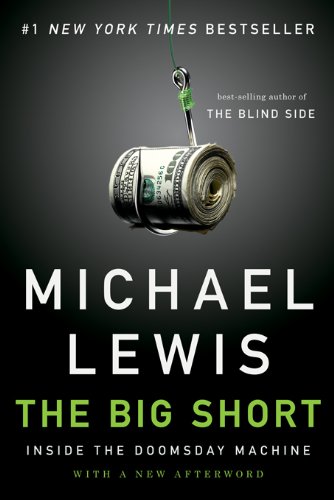

This article is an excerpt from the Shortform summary of "The Big Short" by Michael Lewis. Shortform has the world's best summaries of books you should be reading.
Like this article? Sign up for a free trial here .
How did the actions of AIG lead to the 2008 crisis that affected millions of Americans? Did AIG know the role it was playing in the catastrophe, or was it ignorant of the wider implications of its business practices? And who paid the price for AIG’s bailout?
We’ll cover how AIG insurance company (American International Group) aided banks in the events that would lead to the 2008 financial crisis and the results of the 2008 AIG bailout.
AIG: Shadow Bank
In early 2006, banker Greg Lippmann went to investor Steve Eisman’s office with a proposal to bet against the subprime mortgage market. He told Eisman that the underlying loans in the bonds would start to go bad even if housing prices didn’t fall—all they needed to do was stop rising. Borrowers would be unable to refinance using their homes as collateral, which would, in turn, trigger a wave of defaults. Eisman could profit from the collapse of the housing market buy buying credit default swaps from banks.
For Eisman and others to whom banker Greg Lippmann brought this proposal, it raised an important question: Why had Goldman Sachs been so willing to sell investor Michael Burry $100 million in credit default swaps? In doing so, they were making a bet that millions of poor and indebted Americans would be able to pay their mortgages on time. No one believed that any major investment bank would be willing to make that stupid a bet, no matter how outwardly confident they were in their subprime mortgage bonds. Goldman couldn’t have been the one left holding the bag. So who was?
The answer was American International Group, Inc. (AIG). The insurance giant was ideally placed to enter the credit default swap market. It was a sterling, blue-chip corporation that—crucially—wasn’t a bank at all. It was an insurance company. And weren’t credit default swaps just another form of insurance? Their involvement with credit default swaps was what would lead to AIG’s 2008 crisis the AIG bailout.
As a non-bank, AIG could dive into the world of swaps, long-term options, and other risky financial ventures without being subject to bank regulation. It could engage in speculation free from requirements to keep capital reserves against risky assets. It could be on the hook for $100 million in subprime mortgage loans without needing to disclose to regulatory authorities or its shareholders what it was doing. AIG was operating in the shadows of the financial world, where the regulatory spotlight didn’t shine.
AIG began insuring Goldman Sachs’ and Deutsche Bank’s subprime mortgage bonds as quickly as they could get their hands on them. From their point of view, the loan pools were sufficiently diversified that there was little probability of them all failing at the same time. As far as AIG leadership was concerned, the premiums from the credit default swaps were free money. They could only lose if housing prices fell.
The Ignorance That Led to AIG’s 2008 Crisis
AIG, clearly, did not understand the nuances of the business in which it was so knee-deep. AIG was insuring piles of mortgages that it thought were no more than 10 percent subprime—in fact, that figure was over 95 percent. By 2004, AIG was on the hook for $50 billion in triple-B-rated mortgage bonds. They had taken the long position, gambling on destitute American homeowners to pay their mortgages on time. Their ignorance of their business would lead to AIG’s 2008 crisis and, eventually, the AIG bailout.
Clearly, Goldman Sachs was fleecing AIG. The insurance giant seemed to have no idea just how risky the securities that they’d insured actually were.
How did Goldman Sachs achieve this? By creating a masterfully complex and opaque financial instrument known as a collateralized debt obligation (CDO). Essentially, the CDO was a product designed to conceal the true risks of mortgage-backed securities.
A CDO bundled together the lowest-quality bonds into a whole new tower. It was a bundle of bundles. Bizarrely, the ratings agencies treated this repackaged product as an entirely new financial instrument and slapped a triple-A rating on it (the highest rating that can be given to an asset).
These ratings defied market logic and common sense. The CDO wasn’t a new financial product at all—it was just a Frankenstein monster made up of the dodgiest tranches of the original mortgage-backed securities. But AIG seemed to trust these ratings.
The AIG Bailout
The AIG 2008 crisis was massive. The insurance company collapsed and had to be bailed out by the government.
The $13 billion that AIG had lost to Goldman Sachs betting on subprime mortgage bonds was fully covered by the government. The U.S. government decided that it could not allow all of Wall Street to go under: the toxic subprime assets were spread too far, too wide, and too ambiguously. If one firm needed a bailout, they all needed a bailout.
Did the big banks know that they were too big to fail and that they would receive a bailout no matter what kind of irresponsible risks they took? And did this knowledge bring on the excessive risk-taking? It’s certainly easy to gamble when you know you’re playing with the house’s money. Our collection of esoteric investors had keen insights that few in the period from 2005-2008 had. But what they didn’t know is that the public—all of us—would be the ones ultimately on the hook. The final payer was the U.S. taxpayer.
———End of Preview———

Like what you just read? Read the rest of the world's best summary of "The Big Short" at Shortform . Learn the book's critical concepts in 20 minutes or less .
Here's what you'll find in our full The Big Short summary :
- How the world's biggest banks contributed to the 2008 financial crisis, greedily and stupidly
- How a group of contrarian traders foresaw the bubble popping, and made millions from their bets
- What we learned from the 2008 crisis - if anything






